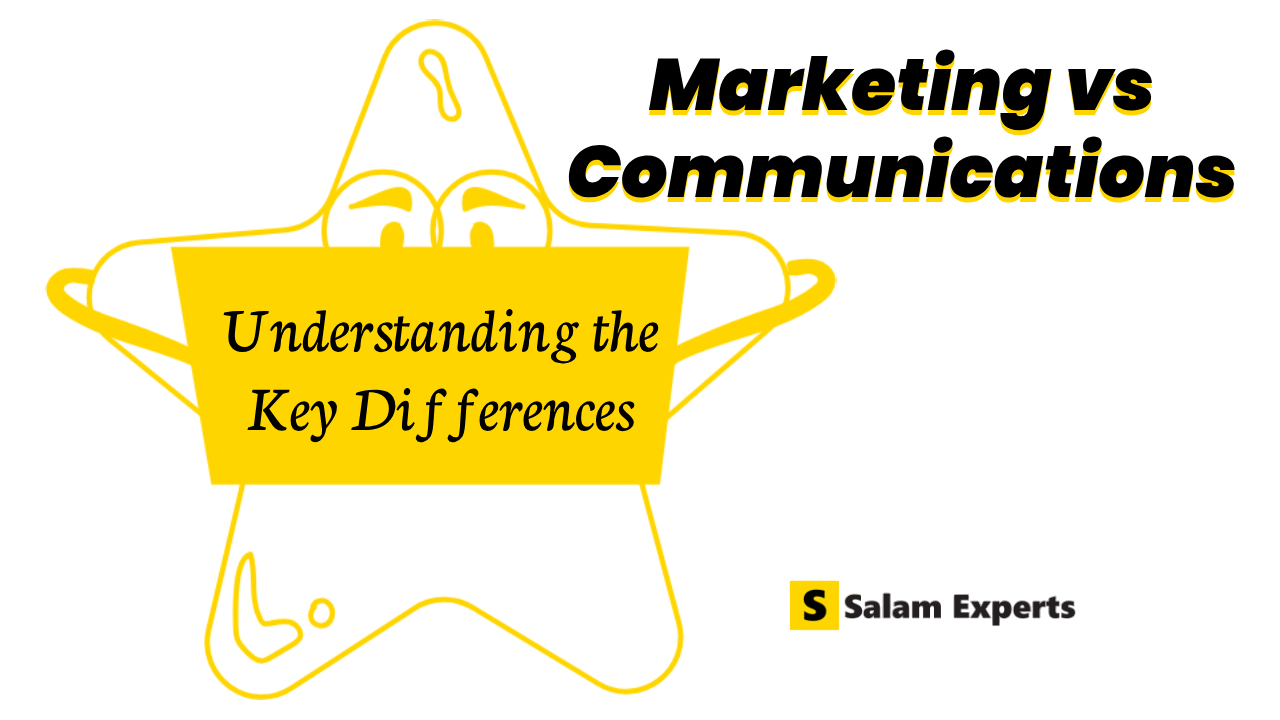Marketing vs. Communication: Understanding the Key Differences

Marketing and communication are two essential components of any successful business strategy, but they serve distinct purposes. Let’s break down the key differences between marketing and communication with clear examples to help you grasp their unique roles.
Marketing
- Definition: Marketing involves promoting products or services to drive sales and revenue.
- Goal: The primary goal of marketing is to attract and retain customers by creating value through products or services.
- Examples: Advertising campaigns, social media promotions, email marketing, and market research are all part of marketing strategies.
- Focus: Marketing focuses on the 4Ps – Product, Price, Place, and Promotion.
Communication
- Definition: Communication is the process of sharing information, ideas, or messages to a target audience.
- Goal: The main objective of communication is to build relationships, convey messages, and create understanding.
- Examples: Press releases, public relations, internal communications, and corporate branding fall under communication efforts.
- Focus: Communication emphasizes clarity, consistency, and engagement with the audience.
Key Differences
- Purpose: Marketing aims to drive sales, while communication focuses on building relationships and conveying messages.
- Audience: Marketing targets customers to promote products, while communication targets various stakeholders to share information.
- Tools: Marketing uses promotional tools like advertising, while communication relies on channels like PR and media relations.
- Outcome: Marketing measures success through sales and ROI, whereas communication evaluates effectiveness through engagement and perception.
By understanding these distinctions, businesses can effectively leverage both marketing and communication strategies to achieve their goals and connect with their target audience in a meaningful way.
Examples of Marketing and Communication Strategies
Marketing and communication strategies play crucial roles in promoting products, building brand awareness, and engaging with target audiences effectively. Here are some examples of marketing and communication strategies based on the provided sources:
1. Marketing Strategies:
- Advertising: Utilizing paid media channels like digital marketing or advertising, print, online, and social media to deliver promotional messages to a wide audience.
- Content Marketing: Creating and distributing valuable, relevant content through blogs, videos, infographics, and social media to engage and educate the target audience.
- Influencer Marketing: Collaborating with individuals or influencers who have a significant following and credibility to promote products or services
- Sponsorships and Event Marketing: Associating the brand with specific events, organizations, or causes to enhance brand awareness and image.
- Digital Marketing: Leveraging online channels such as websites, social media, SEO, pay-per-click advertising, and mobile apps to reach and engage customers.
2. Communication Strategies:
- Public Relations (PR): Managing the company’s image and reputation through media coverage, press releases, events, and other strategies to build trust and credibility.
- Direct Marketing: Engaging in direct communication with individual customers through channels like email marketing, direct mail, telemarketing, and personalized offers.
- Social Media Marketing: Leveraging social media platforms to connect with customers, share content, and facilitate two-way communication.
- Personal Selling: Conducting one-on-one interactions between sales representatives and potential customers, especially for high-value or complex products/services.
- Sales Promotion: Implementing short-term incentives, discounts, coupons, contests, and other activities to stimulate immediate sales or customer engagement
These strategies highlight the diverse approaches that businesses can take to reach their target audience, promote their products or services, and build strong relationships with customers and stakeholders. By combining effective marketing and communication strategies, companies can enhance their brand presence, engage with their audience, and drive business growth successfully.


